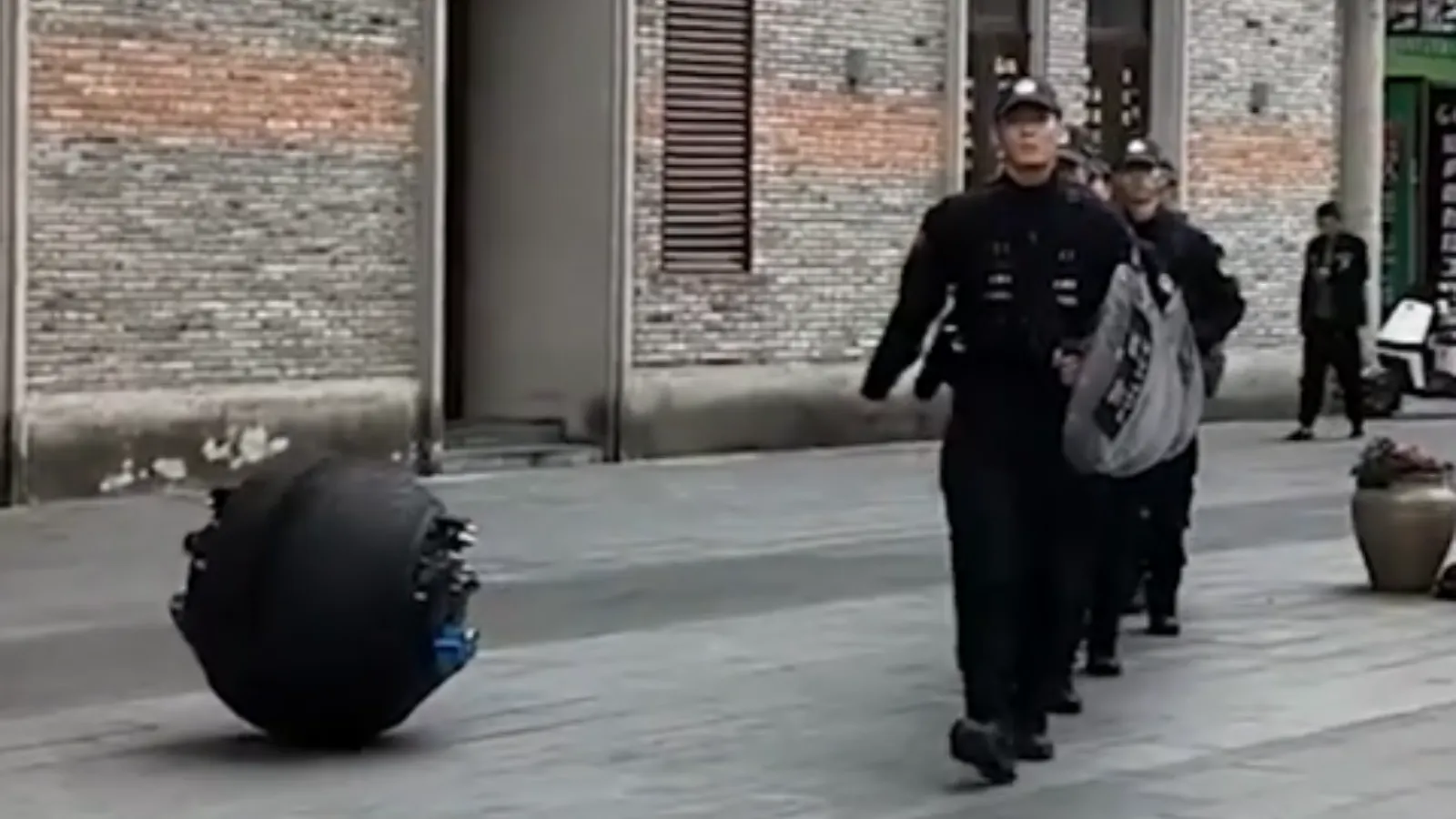
In a scene right out of Black Mirror, police in China have rolled out the newest innovation in autonomous AI-powered street crime fighting: A spherical, virtually indestructible, amphibious, heavily armed device that resembles a giant bowling ball.
The RT-G, manufactured by Shenzhen-based Logon Technology Co., Ltd., is the Swiss Army knife of crime-busting technology.
According to reports, the robot is driven by AI, which can help it ID suspects via facial recognition and notify law enforcement of suspicious activity, and it has an onboard arsenal that includes tear gas sprayers, an extremely loud sound-wave dispersal horn, and even a gun that can entrap a suspect with a net. It can supposedly withstand an impact of up to four tons.
A number of videos posted on social networks this week have gone viral, showing the robot patrolling streets in various smaller Chinese cities.
On TikTok, Peoples Daily, China’s official state-run medium, uploaded a video of a human SWAT team marching alongside the killer bowling ball in the coastal town of Wenzhou, China. Also featured was a far less menacing-looking robot dog.

The RT-G’s design is based on the work of a team of researchers from Zhejiang University’s State Key Laboratory of Industrial Control Technology, posted in a research paper last year.
The aim of the original design was to operate in harsh “unknown environments” like the Moon or Mars.
Now, it appears the government in China intends to use the thing on the streets of various Chinese cities, including Chengdu, where it was unveiled. The RT-G has a battery life of ten hours, can travel up to 21 miles per hour, and can withstand an impact of up to four tons.
“It is highly risky to explore harsh environments and unknown environments, such as wild, fire fields and underground caves,” the researchers wrote. “Using mobile robots to replace humans in these exploration tasks can effectively ensure human health and safety.”
The RT-G’s mobility is powered by a heavy internal pendulum encased within its spherical shell. For sci-fi fans, BB-8 from Star Wars: The Force Awakens or the Droidekas from Star Wars: The Phantom Menace may come to mind. While those droids primarily functioned on land, the RT-G is designed to also operate in the water as well.
Unlike humanoid robots prone to awkward tumbles, the RT-G’s round shape ensures it won’t ever fall flat on its faceplate. One of the other benefits of its design, the researchers said, is that because of its spherical shape, the robot can’t be immobilized by flipping the robot onto its back since, er, it doesn’t have one.
But are these the droids we’re looking for?
Until now, similar devices were intended for the exploration of outer space. In 2001, NASA experimented with the idea of using a two-story tall beach ball, “the tumbleweed rover,” to explore the Martian surface.
And in 2004, Stamford Connecticut-based GuardBot, launched a spherical drone that was developed for the European Space Agency for a mission to Mars. The United States Navy and Marine Corps began testing the GuardBots for reconnaissance missions in 2015.
Whether the RT-G heralds a new robotic frontier or rolls off into the annals of internet fame, one thing is clear: Hollywood may have found the star of its next action blockbuster. Rubber 2: The Tire Strikes Back, anyone?
Edited by Sebastian Sinclair and Josh Quittner